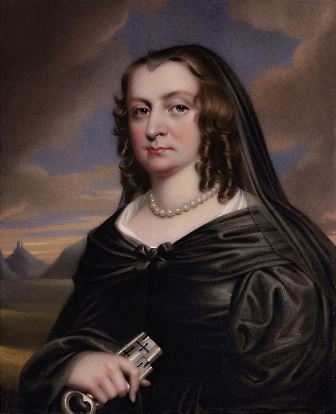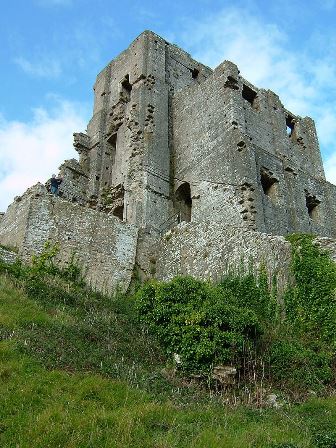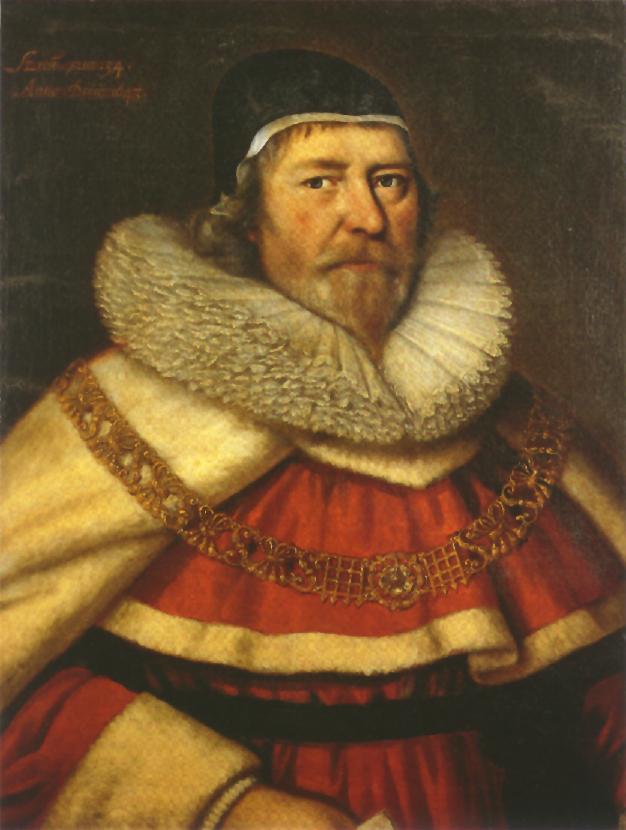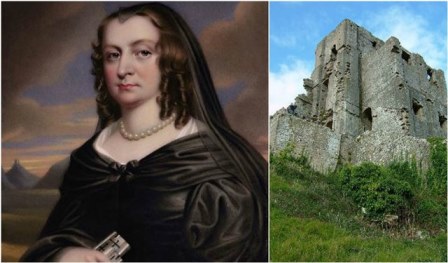When talking about historical heroines, it’s necessary to mention Lady Mary Bankes. This remarkable woman held Corfe Castle, one of the impregnable fortresses of England, against hundreds of enemies during a three-year siege during the English Civil War of 1643 to 1646.
Born in about 1598, Mary Bankes was the only daughter of Ralph Hawtry, Esquire of Ruislip, Middlesex, and Mary Altham. In about 1618, she married Sir John Bankes, who later became Attorney-General to King Charles I and Lord Chief Justice of the Common Pleas. Sir John and his wife, Lady Mary Bankes set about refurbishing the castle at great expense to the height of fashion and comfort.

On the outbreak of the Civil War in 1642, Sir John joined the king while Lady Mary and their younger daughters stayed at Corfe. Their sons were sent for safety to the household of their brother in law Sir John Borlase in Oxford. Which means that the castle was an easy target, but Lady Mary would not agree with that.
In May 1643, a force of Parliamentarians, comprising between 200 and 300 men under the command of Sir Walter Erle, attacked the castle but never succeeded in capturing it. Hot coals were dropped on the heads of Erle’s soldiers as they tried to scale the walls.
The former royal castle was very well defended. Its position on top on a steep hill commanded the approach roads into the town, and the keep was protected by three lines of defenses. Curtain walls, punctuated by towers and a massive gatehouse surrounded the outer bailey.
Then the attackers had to cross a great ditch and force another gatehouse with a double portcullis to enter the second ward or west bailey before attacking the inner ward itself, the whole approach being within firing range of the keep. Mary and her small group defended the Upper Ward and by heaving stones and hot embers from the battlements, managed to repel the assailants, killing and wounding over 100 men.

Angry at being held at bay by a woman, the Roundheads swore a terrible oath. Unless Lady Mary surrendered, they would massacre every man, woman, and child once they managed to get past the defenses. This vow meant nothing to Lady Mary; she continued defending the castle bravely.
The siege continued until 4th August when the Roundheads made a massed attack. Battering rams were used against the main gates; scaling ladders were placed against the walls, and the black smoke of heavy cannon drifted lazily across the scene of battle. Under Lady Mary command her children and her maids hurled buckets of boiling water down on the Roundheads as they tried to climb the walls. Lady Bankes organized raids for food, one of which resulted in the theft of eight cows and a bull. Eventually, the besiegers gave up, leaving behind their artillery and over 100 dead.

Sir John Bankes was able to visit Corfe briefly but in December 1644 news arrived of his death at Oxford. However, Lady Mary was still able to defend the castle heroically and cause headaches to the attackers. As weeks went by Lady Bankes’s small garrison was able to repulse all attacks with hardly any losses themselves.
The Roundheads were becoming desperate to capture the castle, and they probably couldn’t do it if Lady Mary wasn’t betrayed. Finally, the battle came to an end. Lady Mary surrendered. Colonel Bingham was so impressed with the bravery of this mother and her followers that he spared their lives.
